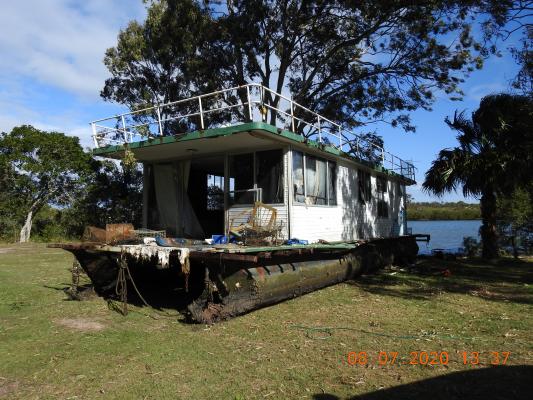By Margaret Maccoll
Maritime Safety Queensland’s forum on Saturday was titled War on Wrecks but it focused less on the removal of derelict boats and more on the cause of their existence.
War on Wrecks chair Kim Richards told a full house of attendees research and feedback had told them the need for a better boat licensing process, more education, boat registration and boat hull identification was the key to identifying and removing wrecked boats and ensuring boat owners were being responsible.
MSQ’s four-year $20 million War on Wrecks campaign has so far removed more than 600 wrecks from Queensland waterways including four in Noosa.
There are about 23,000 registered boats in the Noosa – Sunshine Coast region and 264,000 in Queensland with more than a million people across the state holding a boat license.
Having reached the half-way mark the War on Wrecks taskforce is hosting a series of forums to investigate the reasons behind vessel abandonment.
The Noosa forum was attended by a broad range of boating interest groups including representatives from government, recreational and commercial boating, Coast Guard and Noosa Integrated Catchment Association.
Concerns were raised over the capabilities and knowledge of boat license holders who are able to get a license for a small craft, such as tinnie, and head out the next day in a much bigger craft. The current license enables holders to drive their boats in all locations and situations from rivers to offshore and once obtained a boat license is issued in perpetuity. Attendees raised the possibility of similar rules applying to drivers of boats and cars and the introduction of refresher courses. However the forum heard there had been strong opposition to the proposal boat users gain different licenses to drive bigger craft and to the introduction of increased costs.
At present only powered boats require registration. Forum attendees questioned whether sailing or human-powered boats such as kayaks should be registered. The forum heard much time by police and Coast Guard was spent trying to locate the owners of a vessel found adrift and searching for potential missing occupants.
The lack of registration and hull identification also made finding owners difficult for authorities when they became derelict.
It meant boat owners could tie up their boats and walk away with authorities unable to locate the owner, Ms Richards said. She said a lack of education was partly to blame.
“What we’re finding is people have no idea what to do with boats that become derelict.“
Forum attendees also raised issues of concern on waterways. Waterway congestion, the ability of boats to anchor anywhere in the river and waste disposal were major concerns.
One man who lived on the river told how his jetty had been crashed into on three occasions by boats that had drifted on their anchors.
Ms Richards said the taskforce would conduct two more forums, then prepare a report on findings.
The next stage of the program would be for Transport and Main Roads (TMR) department to conduct detailed consultations on options of future legislation.
“It could be early 2022. TMR’s approach is no surprises and consultation,“ Ms Richards said.
Noosa MP Sandy Bolton asked whether something could be done to address key issues before 2022.
The possibility of initiating a Noosa advisory group was raised as well as the introduction of online education to upgrade the knowledge of boat operators.
Ms Richards said the Maritime Enforcement Team (MET) that conducted an education and enforcement pilot program in Noosa at Easter would return to Noosa in the September school holidays.
For more information visit www.msq.qld.gov.au/waronwrecks or search ‘War on Wrecks’.
If you know the location of an unseaworthy vessel that is a danger to navigation, a threat to the marine environment or public safety email WaronWrecks@msq.qld.gov.au






